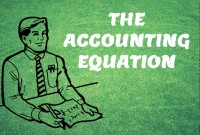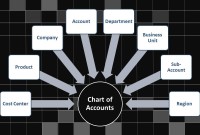- Home
- Business Processes
- Industry Knowledge
- Aerospace Industry
- Automotive Industry
- Banking Domain
- BFSI Industry
- Consumer/ FMCG Industry
- Chemicals Industry
- Engineering & Construction
- Energy Industry
- Education Domain
- Finance Domain
- Hospitality Domain
- Healthcare Industry
- Insurance Domain
- Retail Industry
- Travel and Tourism Domain
- Telecom Industry
- Leadership Skills
- eLearning
- Home
- Business Processes
- General Ledger (Record to Report)
- Global Business Services (GBS) Model
Global Business Services (GBS) Model
Global business services (GBS) is an integrated, scalable, and mature version of the shared services model. Global Business Services Model is a result of shared services maturing and evolving on a global scale. It is represented by the growth and maturity of the Shared services to better service the global corporations they support.
Global business services (GBS) is an integrated, scalable, and mature version of the shared services model. Global Business Services Model is a result of shared services maturing and evolving on a global scale. It is represented by the growth and maturity of the Shared services to better service the global corporations they support. Global Business Services framework adds value to the shared services model by taking the model beyond labor arbitrage. This model adds consistent approaches to global services strategy formation, transition, and governance resulting in improved collaboration across the entire enterprise ecosystem. GBS provides services beyond transactional functions and provides value to the organization by enabling standardization, scalability, technology, well defined and optimized processes and business analytics. Under this model the entire organization collectively start leveraging global business services to accelerate attainment of corporate strategies.
General Electric, Bank of America, American Express are some examples who have already established Global Business Services model for their entire finance functions where a Global Operations Finance Team provides record to report and statutory and tax compliance services to all the businesses under its umbrella.
Main Features of GBS model:
- Integrated compilation of service offerings for multiple support functions within a company
- Global in nature with respect to both delivery centers and customers
- Service provides can be both internal and/or external
- Service providers are managed centrally by GBS organization
- Service offerings by GBS are standardized and follow process model with defined roles and responsibilities and handshakes at each interaction
- Global process ownership
- Integrated application suite(s)/Information Systems across the enterprise with well-defined processes and best practices
- Virtual centers of expertise to build and disseminate subject-matter expertise
- Defined and well tracked operational metrics to measure speed, quality and costs
- Standardization of processes and practices that result in the GBS organization being run like an independent entity
- Ability to take competitive advantage of cost arbitrage and third party expertise
- Mix of service delivery models - Captive offshore; In-house shared services centers; outsourced delivery models; “hybrids”
Value drivers of GBS Model
- Cost savings through economies of scale and labor arbitrage
- Simplification and standardization of processes
- Advanced analytics and visibility across different structures (legal/operational) of the enterprise
- Ability to hire and retain global talent
- Skill arbitrage: value derived from access to higher-skilled labor across globe
- Ability to work in shifts leveraging the time zone differences across globe
- Ability to deploy advanced tools and technology
- Ability to deliver scalability to processes and functions
Functions that can be shared across business units
- Sourcing and Procurement
- Buy to Pay – Accounts Payable
- Invoice to Cash – Accounts Receivable
- Payroll Management
- Record to Report – General Ledger
- Fixed Assets Management
- Statutory Reporting and Tax Reporting
- Human Resources
- Information Technology
- Vendor Management
- Customer Management
- Master Data Maintenance
All the models described above represent matrix structures. However, Matrix Structures can become overly complex, effectively having to uphold two hierarchies, with potential tensions between the two.
Related Links
You May Also Like
-
McKinsey 7S Framework is most often used as an organizational analysis tool to assess and monitor changes in the internal situation of an organization. The model is based on the theory that, for an organization to perform well, seven elements need to be aligned and mutually reinforcing.
-
In this article we will discuss various types of "Management Entities". Various types of operational units, are created by management, to effectively run, manage and control their business. Different types of functional units, and divisional units, are widely used across industry.
-
Functional Organizational Structures
A functional organizational structure is a structure that consists of activities such as coordination, supervision and task allocation. The organizational structure determines how the organization performs or operates. The term organizational structure refers to how the people in an organization are grouped and to whom they report.
-
In this article we will help you understand the double-entry accounting system and state the accounting equation and define each element of the equation. Then we will describe and illustrate how business transactions can be recorded in terms of the resulting change in the elements of the accounting equation.
-
Prepayments and Prepaid Expenses
Prepayments are the payment of a bill, operating expense, or non-operating expense that settle an account before it becomes due. Learn the concept of prepaid expenses. Understand the accounting treatment for prepaid expenses. Understand the concept by looking at some practical examples and finally learn the adjusting entry for these expenses.
-
GL - Understanding Chart of Accounts
A chart of accounts (COA) is a list of the accounts used by a business entity to record and categorize financial transactions. COA has transitioned from the legacy accounts, capturing just the natural account, to modern-day multidimensional COA structures capturing all accounting dimensions pertaining to underlying data enabling a granular level of reporting. Learn more about the role of COA in modern accounting systems.
-
Hierarchical Organization Structures
Hierarchical structure is typical for larger businesses and organizations. It relies on having different levels of authority with a chain of command connecting multiple management levels within the organization. The decision-making process is typically formal and flows from the top down.
-
A legal entity is an artificial person having separate legal standing in the eyes of law. A Legal entity represents a legal company for which you prepare fiscal or tax reports. A legal entity is any company or organization that has legal rights and responsibilities, including tax filings.
-
Legal Structures in Businesses
Businesses not only vary in size and industry but also in their ownership. Most businesses evolve from being owned by just one person to a small group of people and eventually being managed by a large numbers of shareholders. Different ownership structures overlap with different legal forms that a business can take. A business’s legal and ownership structure determines many of its legal responsibilities.
-
The sole trader organization (also called proprietorship) is the oldest form of organization and the most common form of organization for small businesses even today. In a proprietorship the enterprise is owned and controlled only by one person. This form is one of the most popular forms because of the advantages it offers. It is the simplest and easiest to form.
Explore Our Free Training Articles or
Sign Up to Start With Our eLearning Courses

About Us
Learning
© 2023 TechnoFunc, All Rights Reserved










